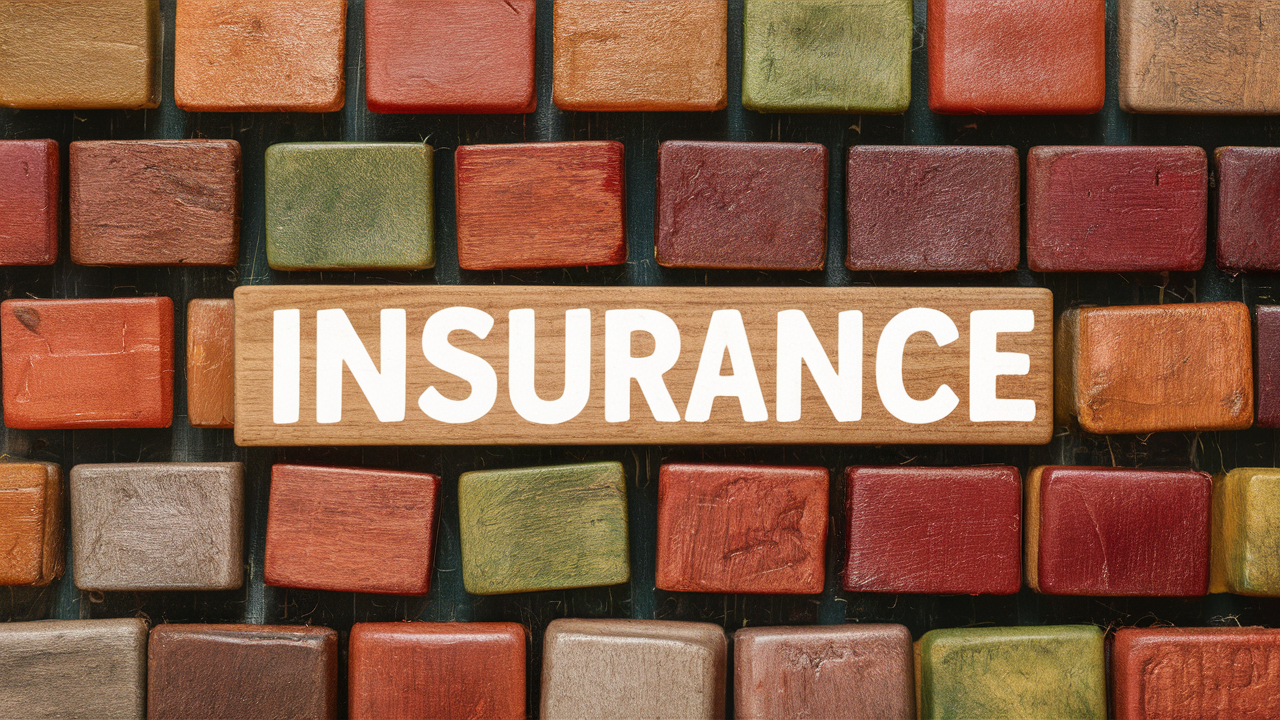What is Construction Insurance? Understanding Construction Type for Insurance is crucial when it comes to insurance for building projects. Different construction methods have varying risks and insurance requirements. Here are some key construction types:
- Wood Frame
- Steel Frame
- Concrete
- Masonry
Ensuring proper insurance coverage based on the construction type can protect against potential risks such as fire, natural disasters, structural issues, and liability claims. This blog post will explore the insurance considerations for each construction type, covering topics like builder’s risk insurance, commercial general liability, and professional liability insurance. We’ll also discuss risk management strategies, including construction site safety, quality control, and contractor prequalification.
Wood Frame Construction: Insurance Considrations
Wood frame construction is one of the most common methods for residential buildings like houses and low-rise apartments. In this type, the structural elements are made mostly of wood.
Wood is a natural and renewable material. It is strong yet lightweight, making it easy to work with. However, wood is also combustible, meaning it can easily catch fire. This makes fire risk a major concern for wood frame construction projects.
Insurance Considerations
Fire Risk and Mitigation
- Have proper fire detection and suppression systems in place
- Use fire-resistant materials where possible
- Implement strict safety protocols for hot works like welding
- Ensure adequate fire insurance coverage
Water Damage and Mold Prevention
Install proper waterproofing and drainage systems
- Use moisture-resistant building materials
- Maintain proper ventilation and climate control
- Have coverage for water damage and mould remediation
Liability for Contractors and Homeowners
- Require general liability insurance for all contractors
- Have builder’s risk insurance during construction
- Homeowners need property and liability coverage after completion
- Cover injuries, property damage, and construction defects
Choosing suitable insurance is vital for wood buildings. The right policies protect against fires, water issues, and liability claims. Preventive measures like fire safety systems and moisture control are also crucial.
Both construction firms and homeowners must ensure adequate financial protection in case of an incident. This allows for proper repairs, replacements, and compensation if needed.
By understanding the risks of wood construction, one can implement risk controls and obtain insurance coverage as per project requirements. This safeguards the interests of all stakeholders involved.
Steel Frame House Insurance
Steel frame construction uses structural steel members like beams and columns to create a building’s core frame. This method is common for commercial, industrial, and multi-story residential projects.
Steel is a solid and durable material. It can support heavy loads and span large distances without excessive reinforcement. Steel frames also have good seismic resistance against earthquakes.
However, steel is susceptible to corrosion, fire damage, and potential structural failures if not designed and constructed correctly. Appropriate insurance is needed to manage these risks.
Structural Integrity and Natural Disaster Risks
- Ensure design complies with building codes for wind, seismic, and snow loads
- Have coverage for natural disasters like earthquakes, hurricanes, floods
- Protect against collapse or failure of structural steel members
Theft and Vandalism Protection
- Implement site security measures like fencing, cameras, guards
- Insure against theft of materials, equipment, tools
- Cover repair costs for acts of vandalism or malicious damage
Liability Coverage for Workers and Third Parties
- Require contractors to have workers’ compensation insurance
- Obtain commercial general liability for third-party injuries/property damage
- Coverslips falls, struck-by incidents, falling objects, etc.
Steel buildings offer superior strength but need proper risk management. Insurance should account for forces of nature that could compromise the structural frame.
Theft and vandalism are other concerns, especially at construction sites. Robust security protocols and insurance can mitigate resulting losses.
Finally, liability insurance is crucial due to the high-risk nature of steel erection work. It safeguards against injuries to workers and damage to other properties.
With suitable coverage and safety measures, steel construction can proceed confidently, effectively protecting all stakeholders’ interests.
Insurance for Concrete Construction
Concrete is a highly versatile material used in various construction projects, from high-rise buildings and bridges to dams and infrastructure. It combines cement, aggregates like sand and gravel, and water to create a strong, durable, and fire-resistant structure.
While concrete offers numerous advantages, such as strength, durability, and low maintenance, it also presents unique risks and insurance considerations.
Seismic and Natural Disaster Risks
- Ensure proper reinforcement and design for earthquake resistance
- Have coverage for natural disasters like earthquakes, floods, and hurricanes
- Protect against structural failure or collapse due to seismic activity
Waterproofing and Moisture Protection
- Implement proper waterproofing measures to prevent moisture intrusion
- Use appropriate sealants and coatings to protect concrete surfaces
- Have coverage for water damage and mould remediation
Liability Coverage for Construction Defects
- Obtain professional liability insurance for design errors or defects
- Cover costs associated with repairs or rebuilding due to faulty construction
- Protect against third-party claims for property damage or personal injury
Concrete structures, particularly in high-risk seismic zones or areas prone to natural disasters, require comprehensive insurance coverage. Earthquakes, floods, and other calamities can cause significant damage, necessitating costly repairs or rebuilding.
Waterproofing and moisture protection are also critical considerations for concrete construction. Moisture intrusion can lead to structural deterioration, mould growth, and other issues which insurance policies should address.
Additionally, liability coverage for construction defects is essential. Errors in design or construction can result in structural failures, putting people and property at risk. Professional liability insurance can provide financial protection against such claims.
By understanding these risks and securing appropriate insurance coverage, contractors, developers, and building owners can mitigate potential losses and ensure the safety and longevity of their concrete structures.
What Types Of Insurance Do Masonry Contractors Need?
Masonry construction involves building with materials like bricks, concrete blocks, stone, or terra cotta. It is a popular method for residential and commercial structures due to its durability, fire resistance, and aesthetic appeal.
While masonry offers many benefits, it also presents unique risks that require appropriate insurance coverage and risk management strategies.
Weather-Related Risks
- Protect against freeze-thaw cycles that can cause cracking or spalling
- Have coverage for water damage from heavy rains or flooding
- Insure against wind damage, especially for unreinforced masonry
Structural Integrity and Settling Issues
- Ensure proper foundation design and soil analysis
- Obtain coverage for settling, cracking, or structural failures
- Protect against loads exceeding the masonry’s strength
Liability Coverage for Property Damage and Personal Injury
- Require general liability insurance for contractors
- Cover third-party property damage from falling debris or materials
- Insure against injuries from collapse, falling objects, or construction accidents
Masonry structures are generally durable but can be vulnerable to weather extremes. Freeze-thaw cycles, heavy rains, and high winds can all cause damage over time. Insurance should cover repairs or rebuilding from such events.
Proper design and construction are crucial to prevent structural issues like settling or cracking. These defects can compromise the building’s integrity and safety, leading to costly repairs or liability claims.
Liability insurance is essential for masonry projects due to potential property damage or injuries from falling materials, collapses, or construction site accidents. It protects contractors and owners from third-party claims.
By understanding these risks and obtaining suitable insurance coverage, masonry construction projects can proceed confidently, safeguarding all stakeholders’ interests.
What You Need to Know About Mixed-Use Building Insurance
Many modern construction projects combine different materials and methods to create hybrid or mixed construction types. For example, a building may have a concrete core with steel framing for the upper floors and a masonry exterior.
These mixed construction types offer the benefits of various materials while addressing their individual limitations. However, they also present unique challenges regarding insurance and risk management.
Combination of Risks
- Assess the risks associated with each construction type used
- Ensure coverage for all potential hazards, from fire to natural disasters
- Account for the interaction between different materials and systems
Underwriting Complexity
- Provide detailed project information for accurate risk assessment
- Work with insurers experienced in mixed construction projects
- Obtain specialised coverage tailored to the project’s unique requirements
Quality Control and Coordination
- Implement rigorous quality control measures across all trades
- Ensure proper coordination between different contractors and teams
- Cover potential defects arising from integration issues
Mixed construction types require a comprehensive approach to insurance and risk management. Each material and method comes with its own risks, which must be carefully evaluated and addressed.
For example, a project combining steel and concrete must account for risks like fire, seismic activity, water damage, and structural failures associated with both materials.
Underwriting such projects can be complex, as insurers need to understand the interplay between different systems and materials. Detailed project information and specialised expertise are necessary to provide appropriate coverage.
Quality control and coordination across trades are critical to prevent defects or issues from integrating various construction types. Thorough inspections, proper sequencing, and clear communication can mitigate these risks.
Types of Construction Insurance
There are several types of construction insurance, each serving a specific purpose. Depending on the nature of the project and the parties involved, you may need one or more of the following types of insurance:
1. Builders Risk (Course of Construction) Insurance
Builders Risk Insurance, also known as Course of Construction Insurance, covers buildings and structures while they are under construction. This policy typically protects against risks such as fire, theft, vandalism, and certain weather-related damages. It is essential for contractors and project owners to ensure that their investment is protected during the construction phase.
2. General Liability Insurance
General Liability Insurance provides coverage for bodily injury and property damage claims arising from construction activities. This insurance is crucial for protecting contractors and subcontractors from lawsuits that could result from accidents on the construction site or damage to third-party property.
3. Errors & Omissions Insurance / Professional Liability Insurance
Errors & Omissions (E&O) Insurance, also known as Professional Liability Insurance, covers contractors and design professionals against claims of negligence or mistakes in the design, planning, or execution of a construction project. This type of insurance is particularly important for architects, engineers, and consultants involved in the project.
4. Commercial Auto/Truck Insurance
Commercial Auto/Truck Insurance provides coverage for vehicles used in the course of construction work. This includes protection against accidents, theft, and damage to vehicles such as trucks, vans, and other commercial vehicles essential to the construction project.
5. Inland Marine Insurance
Inland Marine Insurance covers tools, equipment, and materials that are transported to and from the construction site. This type of insurance is vital for protecting valuable assets that are not covered under standard property insurance policies, especially those that are frequently moved between locations.
6. Contractor License Bonds
Contractor License Bonds are a type of surety bond that contractors are often required to obtain before they can legally operate. These bonds guarantee that the contractor will comply with state and local regulations and fulfill their contractual obligations.
7. Construction Bonds
Construction Bonds, including performance bonds and payment bonds, provide financial protection to project owners. A performance bond ensures that the contractor completes the project according to the terms of the contract, while a payment bond guarantees that subcontractors and suppliers are paid for their work and materials.
8. Workers’ Compensation Insurance
Workers’ Compensation Insurance is mandatory in most states and provides coverage for medical expenses and lost wages for employees who are injured on the job. This insurance is essential for protecting both the workers and the company from the financial impact of workplace injuries.
Key Considerations When Arranging Construction Insurance
Several insurance policies are crucial for construction projects to protect against various risks and liabilities. These policies safeguard the interests of the contractors, developers, property owners, and third parties involved.
Builder’s Risk Insurance
- This policy provides coverage during the construction phase
- It protects against damage to the partially completed structure
- Covers materials, equipment, and temporary structures on-site
- Includes third-party liability protection for injuries or property damage
A Builder’s Risk policy is essential for any construction project. It ensures that the costs of repair or rebuilding are covered if the work-in-progress is damaged by events like fire, weather, theft, or vandalism. This policy typically remains in effect until the project is completed and handed over to the owner.
Commercial General Liability (CGL) Insurance
- CGL covers third-party bodily injury and property damage
- It protects against claims arising from your operations or premises
- Includes product liability for damages caused by your completed work
- Covers legal defence costs and settlement or judgment amounts
All contractors and subcontractors should carry CGL insurance to protect against liability claims. This policy covers injuries to third parties, such as visitors or passersby, and damage to their property caused by your work. It also extends to product liability, which is crucial if your completed work causes harm or damage after finishing the project.
Professional Liability Insurance
- Also known as Errors and Omissions (E&O) insurance
- Covers negligence, mistakes, or omissions in professional services
- Applies to architects, engineers, and other design professionals
- Protects against claims for faulty design or construction defects
Professional Liability insurance is a must for design professionals like architects and engineers. It safeguards against claims arising from errors or omissions in their work, such as faulty designs or construction documents. This policy can provide coverage if these errors result in costly repairs, rebuilding, or third-party damages.
By carefully considering and obtaining the appropriate insurance policies, construction projects can proceed confidently, knowing that financial protection is in place against various risks and liabilities.
Read More: Does Blue Cross Insurance Cover Hearing Aids?
Construction Insurance Requirements
Construction insurance requirements vary depending on the type and scope of the project, as well as the location. Contractors are often required by law or contract to carry certain types of insurance, such as General Liability and Workers’ Compensation Insurance. Project owners may also require additional coverage, such as Builders Risk Insurance and Construction Bonds, to protect their investment.
Construction Insurance Costs
The cost of construction insurance can vary widely depending on several factors. Understanding these factors and knowing the average cost can help you budget for your project and ensure that you have adequate coverage.
Factors that Affect the Cost of Construction Insurance
Several factors influence the cost of construction insurance, including:
- Project Size and Scope: Larger and more complex projects typically require more coverage and thus have higher insurance premiums.
- Location: Construction sites in areas prone to natural disasters or high crime rates may incur higher insurance costs.
- Type of Construction: The materials used, and the methods employed can impact the risk and cost of insurance.
- Claims History: Contractors with a history of frequent or large claims may face higher premiums.
- Coverage Limits: Higher coverage limits and lower deductibles increase the cost of insurance.
Average Cost of Construction Insurance
While the cost of construction insurance varies, here are some average figures:
- Builders Risk Insurance: Typically ranges from 1-4% of the total construction cost.
- General Liability Insurance: Costs can range from $400 to $1,500 annually for small contractors, with larger firms paying significantly more.
- Workers’ Compensation Insurance: Premiums are generally based on payroll, with rates varying by state and industry.
Finding the Best Construction Insurance Companies
Choosing the right insurance company is crucial to ensuring that you have the coverage you need. Whether you’re a contractor, commercial developer, or homeowner, it’s important to find a provider that offers comprehensive policies, competitive rates, and excellent customer service.
The Best Construction Insurance Companies for Contractors and Commercial Developers
Here are some of the top construction insurance companies for contractors and commercial developers:
- The Hartford: Known for its comprehensive coverage options and excellent customer service.
- Travelers Insurance: Offers a wide range of construction-specific policies and a strong claims-handling reputation.
- Nationwide: Provides flexible coverage options tailored to the needs of contractors and developers.
Best Construction Insurance Companies for Homeowners
For homeowners involved in construction projects, these companies offer reliable coverage:
- State Farm: Known for its homeowner-focused policies, including coverage for renovations and home-building projects.
- Allstate: Offers customizable policies with options for additional coverage tailored to home construction.
- Liberty Mutual: Provides competitive rates and a wide range of coverage options for home construction and renovation projects.
What Are the Principals Of Risk Management In Construction?
While insurance provides financial protection, implementing effective risk management strategies is equally crucial for construction projects. These proactive measures can help prevent or mitigate potential risks, ensuring a safer and more successful project outcome.
Importance of Risk Assessment and Mitigation
Identify and evaluate all potential risks associated with the project
- Develop a comprehensive risk management plan
- Implement control measures to minimise or eliminate identified risks
- Continuously monitor and adjust strategies as needed
Construction Site Safety Measures
- Establish and enforce strict safety protocols and procedures
- Provide appropriate personal protective equipment (PPE) to workers
- Implement fall protection systems, scaffolding, and other safety equipment
- Conduct regular safety inspections and training sessions
Quality Control and Inspection Protocols
Develop and implement a thorough quality control plan
- Conduct inspections at critical stages of construction
- Ensure compliance with building codes, regulations, and project specifications
- Address and correct any deficiencies or non-conformities promptly
Contractor Prequalification and Vetting
- Thoroughly vet and prequalify all contractors and subcontractors
- Review their safety records, insurance coverage, and past project performance
- Ensure they have the necessary licenses, certifications, and experience
- Establish clear contractual obligations and expectations
Risk management is an ongoing process that starts from the project planning stage and continues throughout construction. By identifying potential risks early and implementing appropriate control measures, contractors can minimise the likelihood and impact of incidents.
Prioritising site safety is paramount, as construction sites are inherently hazardous environments. Strict protocols, proper equipment, and ongoing training can significantly reduce the risk of accidents and injuries.
Quality control measures are equally important to ensure the project meets all requirements and standards. Regular inspections and promptly addressing deficiencies can prevent costly rework or potential liability issues.
Finally, carefully vetting and selecting qualified contractors with proven track records is crucial. Their expertise, safety practices, and compliance with contractual obligations can greatly impact the overall risk profile of the project.
By adopting a comprehensive risk management approach, construction projects can be completed safely, on time, and within budget while protecting the interests of all stakeholders involved.
Conclusion
Understanding the unique risks and insurance requirements associated with different construction types is crucial for successful project delivery. Each method presents its challenges, from wood-frame residential buildings to steel and concrete commercial structures.
By thoroughly evaluating the construction type, obtaining appropriate insurance coverage, and implementing robust risk management strategies, contractors and developers can safeguard their projects against potential losses and liabilities.
Working closely with experienced insurance professionals specialising in construction ensures comprehensive protection. They can guide the right policies, coverage limits, and endorsements needed for your specific project.
Additionally, staying up-to-date with industry trends, building codes, and regulations is essential to maintain compliance and mitigate emerging risks effectively.
By taking a proactive approach to insurance and risk management, construction professionals can confidently navigate the complexities of various construction types, protecting their investments and delivering successful projects for their clients.
Frequently Asked Questions
What is a Construction Type?
A construction type refers to the classification of buildings based on their construction materials and methods. This classification helps determine the building’s structural integrity, fire resistance, and suitability for specific purposes. Construction types are essential in planning, designing, and ensuring compliance with building codes and regulations.
What are the 5 Types of Construction?
The five primary types of construction are:
- Type I – Fire-Resistive: Buildings made of non-combustible materials, such as steel and concrete, that provide a high level of fire resistance. These are often high-rise buildings and are designed to withstand fire for an extended period.
- Type II – Non-Combustible: Similar to Type I but with less fire resistance. The materials used are non-combustible, like metal and concrete, but the construction may not have the same fireproofing as Type I.
- Type III – Ordinary: Buildings with non-combustible exterior walls but with interior elements made of combustible materials, such as wood. This type is common in commercial and residential buildings.
- Type IV – Heavy Timber: Also known as mill construction, this type uses large wooden beams and columns. The heavy timber provides a degree of fire resistance, and the construction is often seen in older industrial buildings and some residential structures.
- Type V – Wood Frame: The most common type for residential buildings, this construction uses wood for both interior and exterior elements. It is the least fire-resistant but offers flexibility and cost-effectiveness.
What are the 4 Types of Construction Work?
The four main types of construction work are:
- Residential Construction: This includes the construction of houses, apartments, and other living accommodations. It often involves wood-frame construction and focuses on creating safe, comfortable living spaces.
- Commercial Construction: This type involves building structures for business purposes, such as offices, shops, and restaurants. Commercial construction often uses a mix of construction types, depending on the building’s function and size.
- Industrial Construction: This category covers the construction of facilities like factories, power plants, and warehouses. Industrial construction often requires specialized techniques and materials to handle specific operational needs.
- Infrastructure/Heavy Civil Construction: This includes projects like roads, bridges, tunnels, and utilities. It often involves large-scale projects that require extensive planning and resources, using durable materials to withstand heavy use.
What is the ISO for Building Materials?
The ISO for building materials refers to the set of standards established by the International Organization for Standardization (ISO) that govern the quality, safety, and performance of materials used in construction.
The relevant ISO standard for building materials is ISO 21930:2017, which provides guidelines for sustainability and environmental performance in the construction industry. Other ISO standards, like ISO 9001 (quality management) and ISO 14001 (environmental management), may also apply depending on the specific materials and processes used.

Justin Taylor is the creative force behind Insuranted.com, a premier destination for insightful and trustworthy insurance information. With a dedication to demystifying insurance complexities, Justin strives to equip readers with the knowledge they need to make smart, informed decisions.










